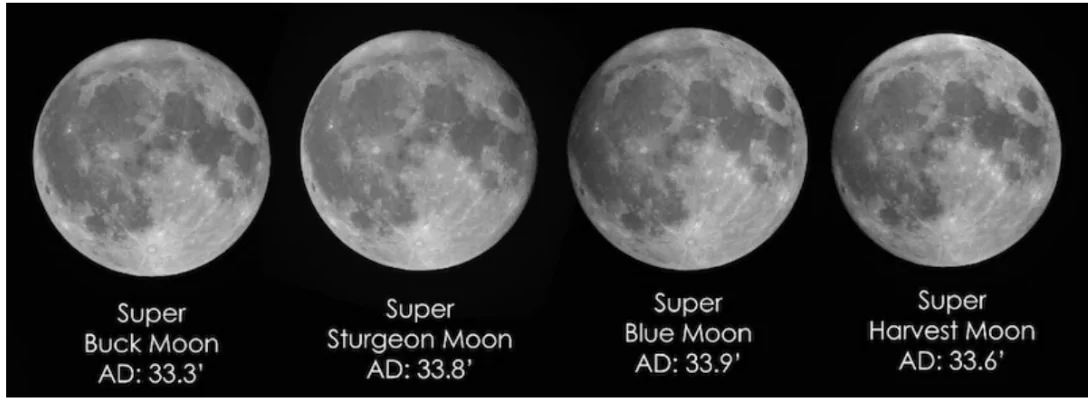The year 2024 is expected to witness four supermoons in a row with the first one slated to occur on August 19, Monday at about 12:00 AM IST.
- Supermoons in 2024:
- Aug 19: 224,917 miles (361,969 kilometers): It will be a Blue Moon
- Sep 18: 222,131 miles (357,485 kilometers): It will be a Super Harvest Moon.
- Oct 17: 222,055 miles (357,363 kilometers): It’ll be a Super Hunter’s Moon and the closest full supermoon for 2024.
- Nov 15: 224,853 miles (361,866 kilometers)
Enroll now for UPSC Online Classes
The August Supermoon
- It will also be a Blue Moon which corresponds with the Hindu festival Raksha Bandhan, also called Rakhi Purnima.
- Other Names: Many other names reported for this Moon as the Red Moon, the Corn or Green Corn Moon, the Barley Moon, the Herb Moon, the Grain Moon, and the Dog Moon
- The Moon will appear for three full days, from Sunday morning through early Wednesday morning.
- Visibility: The August Supermoon Blue Moon can be witnessed globally
- Asia and Australia: The full moon will be visible on August 20 from Nepal Standard Time eastward across the rest of Asia and Australia to the International Date Line.
- In India, we will be able to see it during the night of August 19 and into the early morning of August 20.
About Supermoons
- Coined By: The term supermoon was coined by astronomer Richard Nolle in 1979.
- A supermoon occurs when the moon is within 90 percent of its nearest approach to Earth.
- They are known to be the brightest and biggest full moons of the year. It appears around 30 percent brighter and 14 percent larger than a regular moon.
- Occurrence: When the full moon and Perigee closely coincides with each other, in the language of popular culture, we have a supermoon.
- Moon Illusion: It happens when the moon is near the horizon. The moon appears larger due to this and the effect is strongest when the moon is either rising or setting.
Check Out UPSC NCERT Textbooks From PW Store
About Blue Moon
- Origin: The first Blue Moon was recorded from 1528 onwards and is believed that the name Blue Moon originated from an old phrase meaning ‘betrayer moon’. However Blue Moon is not Blue in colour
- Types: There are two types of Blue Moon,
- The second full moon of a month with two full moons came to be known as a ‘Blue Moon’ since 1940.
- Seasonal Blue Moon: A third full moon in a season that has four full moons is known as a seasonal blue moon.
- This is the type of Blue Moon that will be visible on August 19.

![]() 17 Aug 2024
17 Aug 2024

